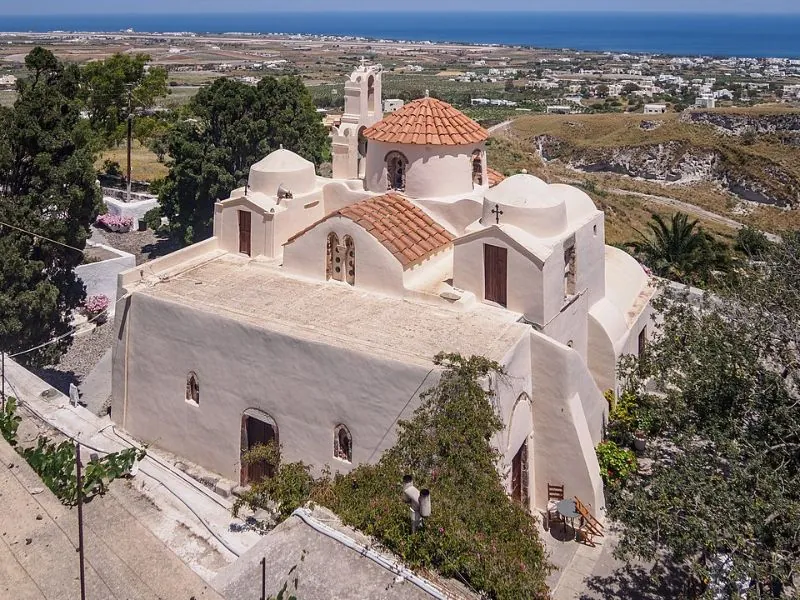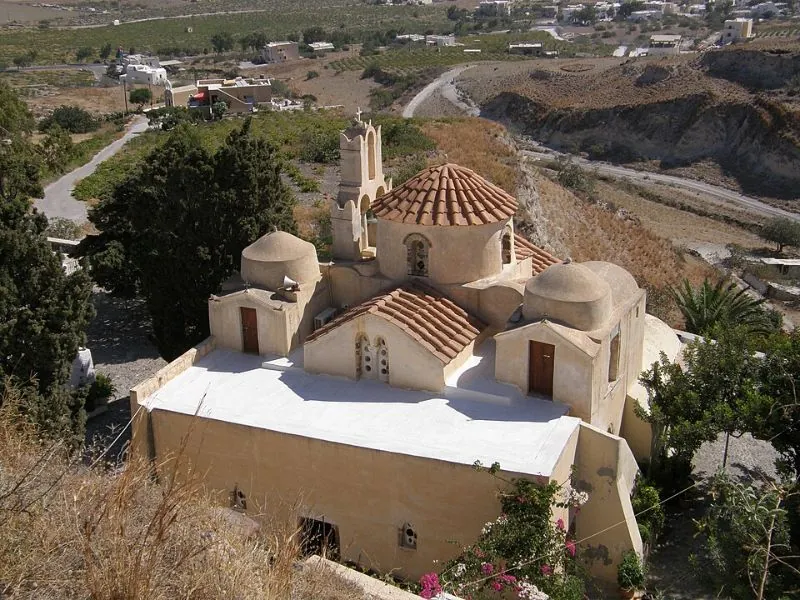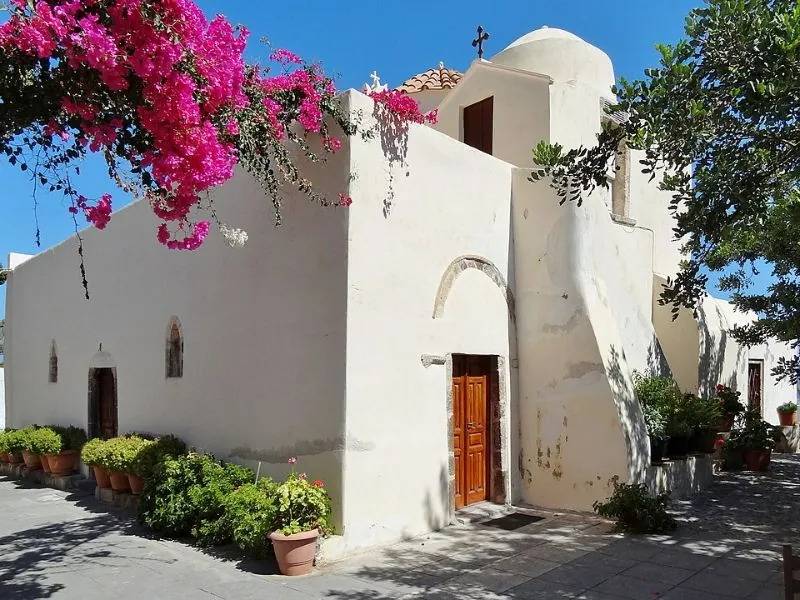Table of Contents
Introduction
Tucked among vineyards on the slopes above Kamari, Panagia Episkopi Church feels worlds apart from Santorini’s bustling caldera towns.
Built in the 11th century and lovingly called “Piskopi” or “Episkopi Gonias” by locals, the church is more than an architectural relic; it is a living sanctuary where incense lingers beneath a centuries-old dome and pilgrims gather every August for the island’s most heartfelt feast.
To step through its low marble doorway is to cross a threshold where time, art and devotion intertwine in the gentle candlelight of an Aegean evening.
Origins and Early Role
According to tradition, Emperor Alexios I Komnenos commissioned Panagia Episkopi Church around 1070 CE, replacing an earlier three-aisled basilica that had crumbled in earthquakes.
The new edifice became the seat of the Orthodox bishop of Thera and later housed a Latin prelate under Venetian rule—evidence of Santorini’s strategic pull at the crossroads of East and West.
During medieval raids, villagers sheltered manuscripts and icons inside its thick pumice-stone walls, trusting the Virgin’s intercession to shield both souls and harvests. Even today, elders recount tales of marauding corsairs deterred by sudden sea squalls after prayers were offered at Episkopi.
Architecture and Interior Decoration
The church exemplifies the cross-in-square plan so beloved by Middle-Byzantine architects. A graceful dome rises from four internal arches, its exterior capped in orange tiles that glow at sunset. Elements of the older basilica remain: spolia columns flank the narthex, and sculpted marble cornices appear above later brickwork, telling a silent story of reuse and resilience.
Inside, a white-veined marble templon screens the sanctuary, its lattice of columns and carved reliefs leading the eye toward shimmering frescoes. Scholars debate their exact date—some place them in the late 11th century, others in the 12th—but all marvel at their vibrant ochres and lapis blues.
Saints stand in long processions, their almond eyes fixed on worshippers in a dialogue that bridges nine hundred years.
The Icon of Panagia Glykofilousa
Crowning the templon is the church’s greatest treasure: the icon of the Virgin “Glykofilousa” (Sweet-Kissing Mother). Painted on cedar and edged by six haloed hierarchs, it shows Mary caressing the cheek of the infant Christ in a moment of tender intimacy.
Tradition holds that this very icon once joined the wall processions defending Constantinople; it was later gifted to Episkopi, where it has remained for nearly a millennium.
Each 15 August, islanders carry the icon in candlelit procession around the courtyard while hymns echo off surrounding hillsides—an annual reminder that Panagia Episkopi Church is as much a beating heart as a historic shell.
A Spiritual Crossroads Through the Ages
Though small, the church has welcomed diverse traditions. Venetian governors held Latin Mass here in the 13-14 centuries, adding Gothic flourishes to door lintels; Ottoman firmans in later centuries recognised its importance by granting limited tax exemptions to its clergy.
Pilgrims travelling between Rhodes and Piraeus paused to venerate the Glykofilousa before continuing their voyages. During the catastrophic eruption of 1956, villagers again sought refuge within these walls, believing the site’s ancient sanctity might spare them harm.
Their faith proved well placed: the building emerged with only superficial cracks, and services resumed within weeks—a testament to both sturdy masonry and enduring devotion.
Visiting Panagia Episkopi Church Today
Modern travellers reach the church via a quiet lane south of the village of Exo Gonia. Vine terraces and fig trees frame the approach, and the distant hum of Santorini Airport falls away in the serene courtyard.
Modest dress is appreciated—shoulders covered, hats removed—though visitors of all backgrounds are welcome to light a beeswax candle and pause beneath the dome. Late afternoon offers soft light for admiring frescoes without crowds; on 15 August, arrive early to join vespers and share sweet bread baked in village ovens.
An adjacent shop sells local honey and replicas of the Glykofilousa icon, the proceeds funding conservation of flaking pigments inside.
Conclusion
From its Komnenian foundations to its annual feast days, Panagia Episkopi Church embodies Santorini’s ability to weave resilience, beauty and faith into a single stone fabric. Stand beneath its dome, watch sunbeams dance across marble and gold leaf, and you sense the quiet power that has sustained islanders through eruptions, invasions and modern tourism.
More than a historical monument, this church remains a living haven where past and present kneel side by side—proof that spiritual light can outshine even the brightest Aegean sun.




